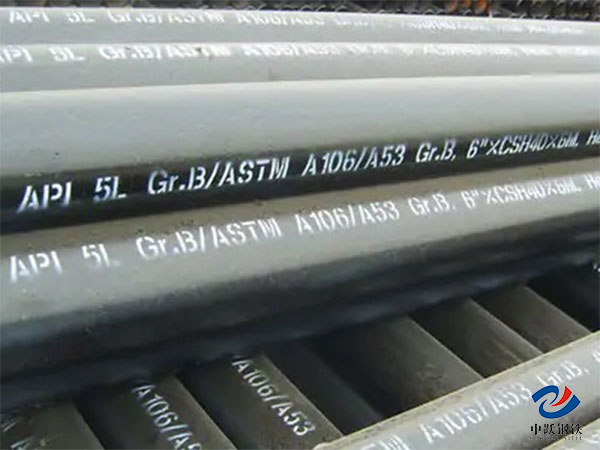ASTM A106 is the standard specification for high temperature service of seamless carbon steel pipes for high temperature applications, primarily in the oil and gas, petrochemical and power generation industries. ASTM A106 Carbon steel tubes are available in three grades: Grade A, Grade B, and Grade C. The main difference between them is their chemical composition and mechanical properties.

Chemical composition
|
Element
|
A
|
B
|
C
|
|
C
|
≤0.25%
|
≤0.30%
|
≤0.35%
|
|
Mn
|
≤0.27~0.93%
|
≤0.29~1.06%
|
≤0.29~1.06%
|
|
S
|
≤0.035%
|
≤0.035%
|
≤0.035%
|
|
P
|
≤0.035%
|
≤0.035%
|
≤0.035%
|
|
Si
|
≥0.10%
|
≥0.10%
|
≥0.10%
|
In ASTM A106 carbon steel tubes, Grade A has the lowest carbon content, followed by Grade B, and then grade C has the highest carbon content.
The content of manganese is higher in grade B and C, which helps to improve strength and toughness.
Mechanical property
Tensile strength:
Grade A: 48,000 psi (330 MPa)
Grade B: 60,000 psi (415mpa)
Grade C: 70,000 psi (485 MPa)
Yield strength:
Grade A: 30,000 psi (205 MPa)
Grade B: 35,000 psi (240 MPa)
Grade C: 40,000 psi (275 MPa)
A106 Gr.C has the highest yield strength and tensile strength, Gr.A the lowest, and Gr.B the middle. With the increase of grade, the strength increases, but the toughness may decrease, especially in the low temperature environment may be more prone to brittle fracture.
Weldability
Due to the relatively low carbon content of grade A and Grade B, the welding performance is good, and conventional welding methods can be used (such as TIG, MIG, SMAW, etc.). Grade C has a relatively high carbon content and requires heat treatment after preheating, thus reducing the risk of cracks during welding.
Application scenario
ASTM A106 is the standard specification for high temperature service of seamless carbon steel pipes for high temperature applications, primarily in the oil, gas, petrochemical and power generation industries. The three grades of ASTM A106 piping also have different application areas.
Grade A: Suitable for occasions where the pressure is not too high and the strength requirements are relatively low, such as low-pressure steam, air and water pipes.
Grade B: Class B is the most common grade of ASTM A106
carbon steel pipe and is widely used in oil and gas transmission, boilers, heat exchangers and high-temperature steam pipes.
Grade C: with high strength and performance, suitable for high pressure, high temperature, high strength demand conditions, such as oil refineries, chemical plants of high temperature and high pressure pipelines.
Summary
Of all the grades of ASTM A106 carbon steel pipe, Grade A has the lowest strength and Grade C has the highest strength. Due to its strength and cost balance, Grade B is the most widely used and is widely used in many fields and can be used in most high-temperature pressure piping systems.
